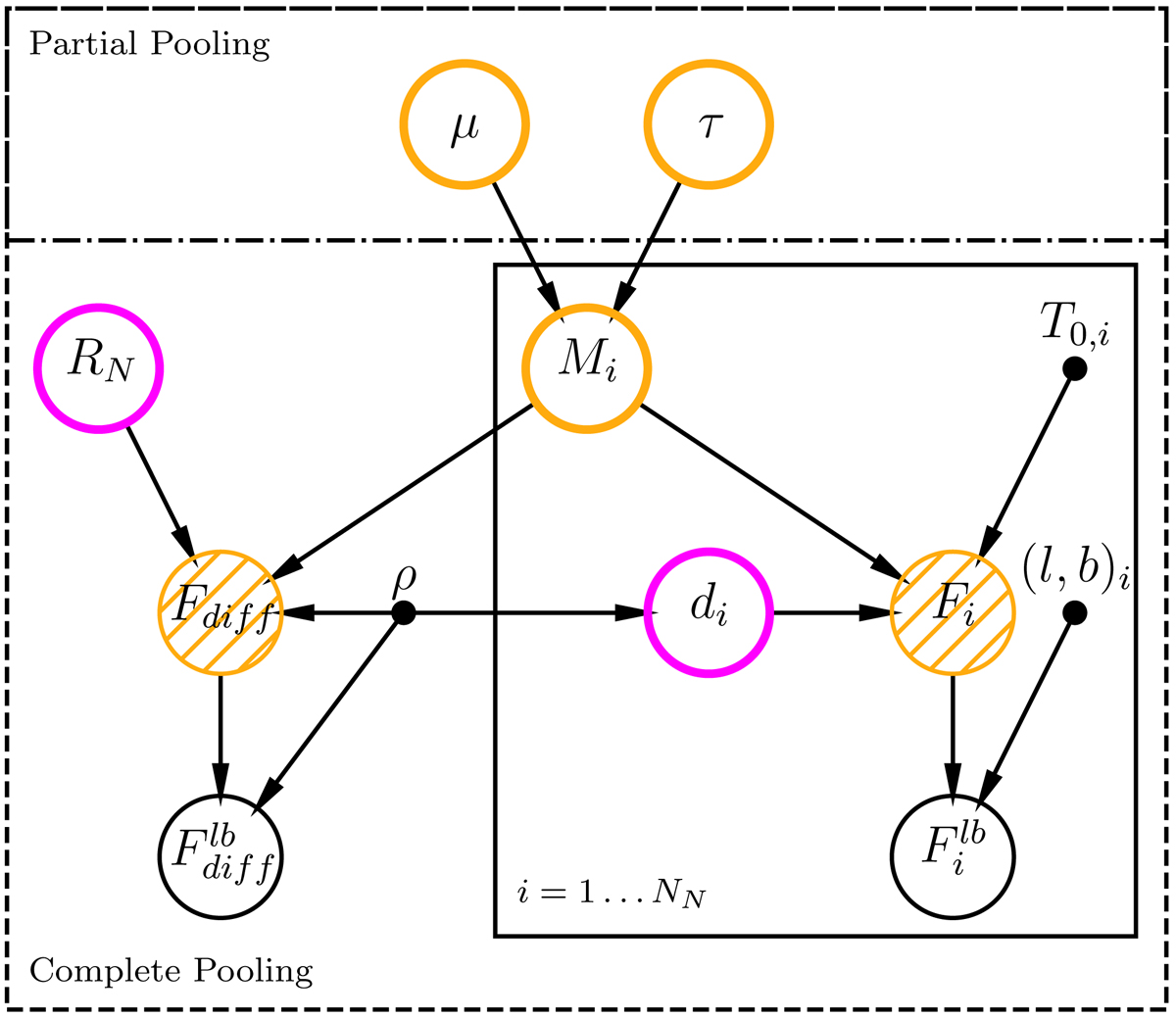Fig. 6.

Complete graph of different model variants used in this study. When the source models are used individually, that is, regardless of a common underlying physical process, the most conservative estimates are found in a no pooling setting (Sect. 5.2.1). The opposite extreme assumes that all objects eject the same amount of matter, so that instead of ∼100 different masses, only one is fitted. This resembles complete pooling and defines tight constraints but is subject to bias if the true variance is large (Sect. 5.2.2). A compromise between no and complete pooling is achieved by invoking the hyper-parameters μ and τ that determine the mean and the spread of ejecta masses, if any (partial pooling, dash-dotted box, Sect. 5.2.3).
Current usage metrics show cumulative count of Article Views (full-text article views including HTML views, PDF and ePub downloads, according to the available data) and Abstracts Views on Vision4Press platform.
Data correspond to usage on the plateform after 2015. The current usage metrics is available 48-96 hours after online publication and is updated daily on week days.
Initial download of the metrics may take a while.


